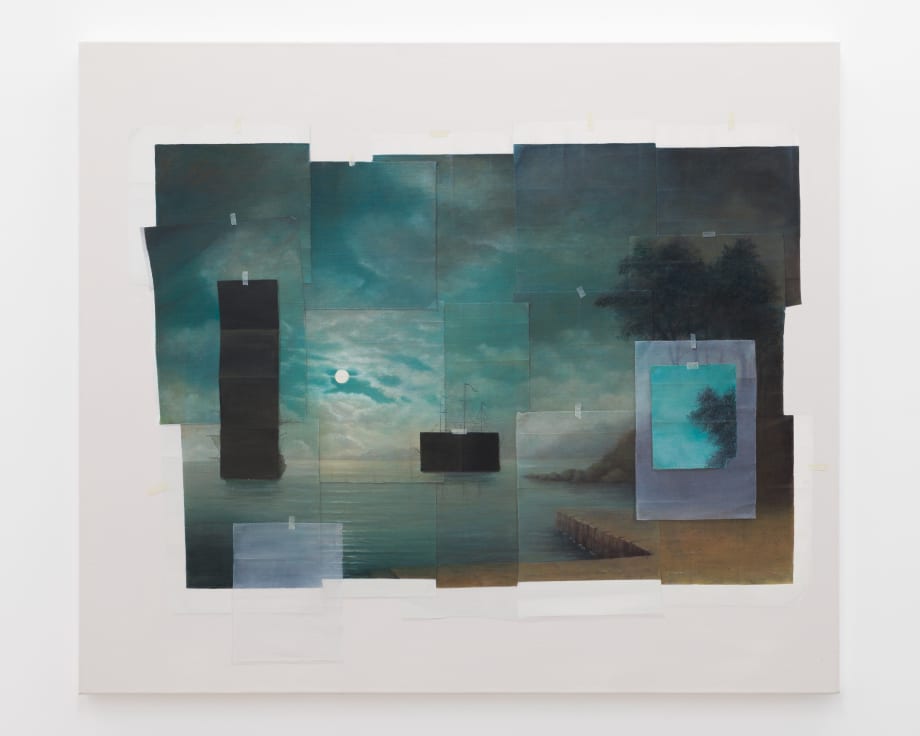In her recent work Emily Wolfe turns her attention to the history and traditions of European landscape painting, more specifically those prints made after 17th and 18th century paintings by French artists Claude Lorrain and Claude-Joseph Vernet. Wolfe photocopies the prints in sections before cutting and reassembling them as paper collages, with the addition of other materials such as paper and masking tape. She then photographs and discards the collages, only then beginning the process of painting from the photographic image.
The paintings make reference to the process of recording archaeological excavations, something I became interested in after a period spent working on a variety of sites with the Museum of London Archaeology. The two processes of painting and excavating are connected in my mind. Each process involves layering and stratification and the consequent emergence of narratives.
Through this careful excavation Wolfe simultaneously disrupts and perpetuates the illusion of the image and the nature of its construction as a series of intersecting planes. Time and memory are collapsed. Positioned at the boundary between the painted world and the physical one, at the threshold between dream and reality, Wolfe leads us in ever-increasing circles, continuously looping back on ourselves.
Art historian David Maskill writes, “What fascinates Wolfe about this process is the complex layering of references between reproductions and ‘originals’”. In a text commissioned for the exhibition, Maskill deftly unpacks the implications of Wolfe’s collage process but also her engagement with the history of trompe l’œil and the illusionistic power of art. You can read Maskill's essay here.
Emily Wolfe (b.1972) moved to London over twenty years ago when she was awarded the Ryoichi Sasakawa Scholarship to study for a Master’s in Fine Arts at the prestigious Slade School of Fine Arts at University College London. Since then, Wolfe has managed to sustain an international arts practice with regular exhibitions both in Aotearoa and the UK. These days, she is based in Oxford, where she lives in an old Victorian house with her historian husband and daughter.
David Maskill is a renowned art historian, collector, and specialist in French 18th-century art and the history of prints. Maskill studied art history at the Courtauld Institute of Art in London before returning to New Zealand to take up an academic position at Victoria University of Wellington (1993-2019). In 2004, he was the recipient of a Harold Wright scholarship to spend six months in the Print Room at the British Museum and it was during this period of immersion in one of the greatest print collections in the world, that he developed his passion for and expertise in prints. In 2000, he initiated an Honours-level course in the history of prints that culminated in an exhibition and publication. He has written numerous articles for leading journals and publications. Maskill recently established MARIETTE Prints in homage to the great eighteenth-century collector, scholar and dealer, Pierre-Jean Mariette (1694-1774).

